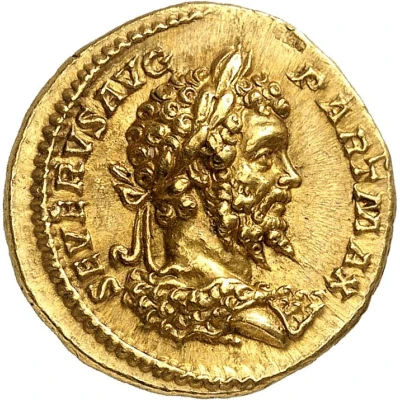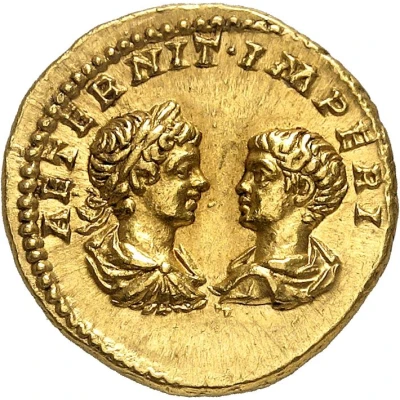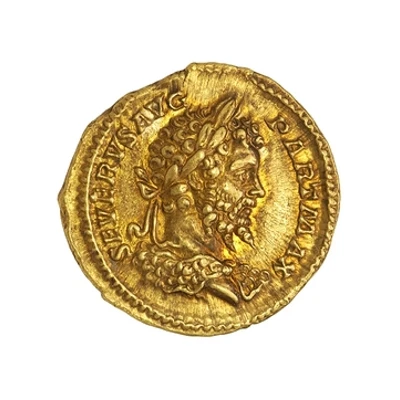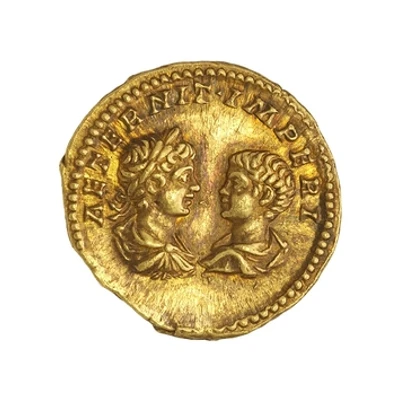


© Münzkabinett - Staatliche Museen zu Berlin (CC BY-SA 4.0)
Aureus - Septimius Severus, Caracalla, and Geta AETERNIT IMPERI
| Gold | 7.29 g | 20 mm |
| Issuer | Rome › Roman Empire (27 BC - 395 AD) |
|---|---|
| Emperor | Septimius Severus (Lucius Septimius Severus) (193-211) |
| Type | Standard circulation coin |
| Years | 200-201 |
| Value | 1 Aureus = 25 Denarii |
| Currency | Denarius, Reform of Augustus (27 BC – AD 215) |
| Composition | Gold |
| Weight | 7.29 g |
| Diameter | 20 mm |
| Shape | Round (irregular) |
| Technique | Hammered |
| Orientation | Variable alignment ↺ |
| Demonetized | Yes |
| Updated | 2024-10-05 |
| Numista | N#269257 |
|---|---|
| Rarity index | 100% |
Reverse
Busts of Caracalla, laureate, draped, cuirassed, and of Geta, bare-headed, draped, cuirassed, facing one another.
Script: Latin
Lettering: AETERNIT IMPERI
Translation:
Aeternitas Imperii.
The eternity of the Roman Empire.
Comment
Source:Online Coins of the Roman Empire (OCRE)
Interesting fact
One interesting fact about this coin is that it features the portraits of three Roman emperors: Septimius Severus, Caracalla, and Geta. This is significant because it highlights the practice of imperial succession during the Roman Empire, where multiple emperors would rule together, often with a senior emperor and one or more junior emperors. This particular coin was minted during a time of political instability, with the three emperors ruling together but also struggling for power and control. The coin serves as a tangible reminder of the complexities of Roman imperial politics during this period.

